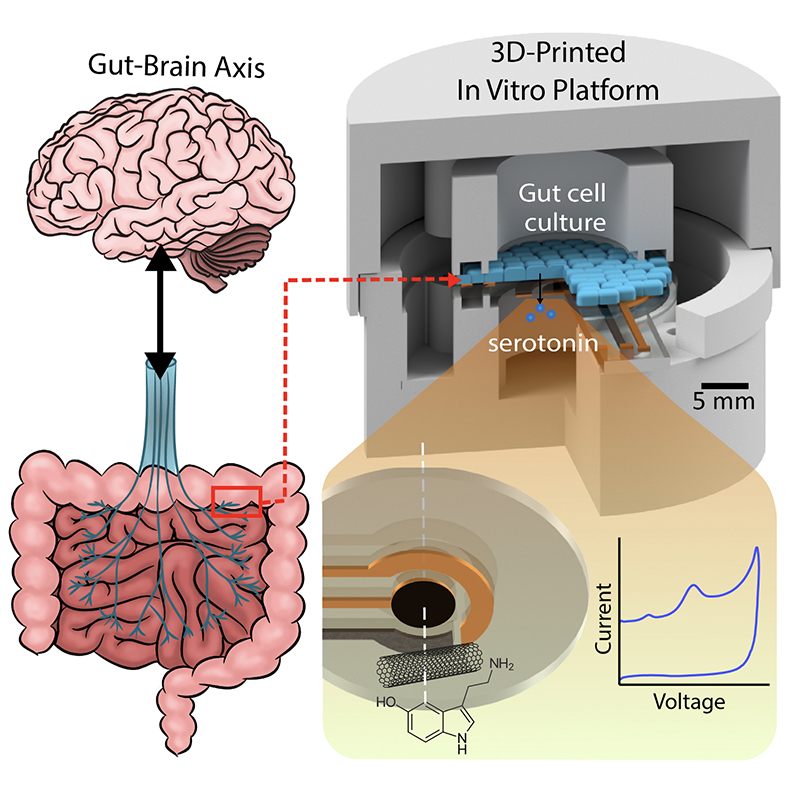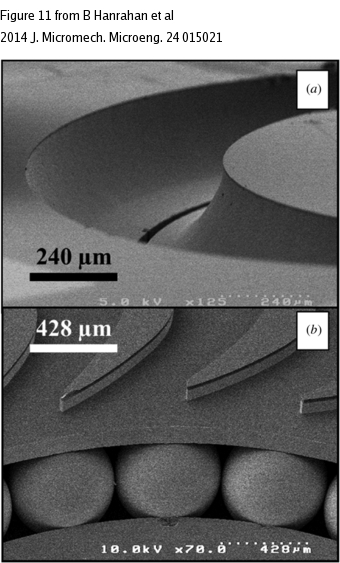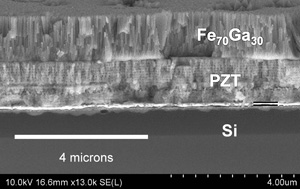News Story
Micro-turbine research on cover of Journal of Micromechanics and Microengineering

Above: The research is the cover article of the June 2013 Journal of Micromechanics and Microengineering. Below: Photographs of both the 5 mm and 10 mm devices with a British Pound coin for scale (top), and a cutaway view of the device showing the retainer ring (bottom).
Micro-turbine research by ISR Director Reza Ghodssi (ECE/ISR) and his colleagues is the cover article of the June 2013 issue of the Journal of Micromechanics and Microengineering, one of the top journals in the field.
The lead author is Robert Hergert of the Department of Electrical and Electronic Engineering, Imperial College London. Along with Ghodssi, co-authors include his former Ph.D. student, alumnus Brendan Hanrahan (MSE Ph.D. 2013), currently with the Army Research Laboratory; and Andrew Holmes of the of the Department of Electrical and Electronic Engineering, Imperial College London.
"Performance of integrated retainer rings in silicon micro-turbines with thrust style micro-ball bearings" represents another advance in the longstanding research into power MEMS devices based on micro-ball bearing technology conducted in Ghodssi's MEMS Sensors and Actuators Lab.
Retainer rings are commonly used in macro-scale bearings to ensure uniform spacing between the rolling elements. The integration of retainers into micro-bearings could lower costs by reducing the number of balls required for stable operation, and also open up the possibility of "smart" bearings with integrated sensors to monitor the bearing status.
The research explores the performance of different silicon retainer ring designs when integrated into silicon micro-turbines (SMTs) incorporating thrust-style bearings supported on 500 μm diameter steel balls. Experimental performance curves are presented for SMTs with rotor diameters of 5 mm and 10 mm, each with five different retainer designs varying in mechanical rigidity, ball pocket shape and ball complement.
The researchers found that different retainer designs yielded different performance curves, with closed pocket designs consistently requiring lower input power for a given rotation speed. The most rigid retainers gave the best performance overall. Both 5 mm and 10 mm diameter devices showed repeatable performance at rotation speeds up to and exceeding 20 000 RPM with input power levels below 2 W, and devices were tested for over 2.5 million revolutions without failure.
This work presents the first exploration of several different geometries of silicon retainer rings integrated into a SMT with a thrust ball bearing, at rotor diameters of both 5 mm and 10 mm. The aim was to gain an initial idea of what type or types of retainer might be expected to give the best performance in the longer term.
Full ring retainers, which were annular with cylindrical ball pockets, were found to perform better than designs with pockets that were open on one side, even though the latter had lower contact area with the bearing rings. Removal of material from the full ring design while retaining the cylindrical pocket shape was also found to degrade performance. The SMTs with full ring retainers could operate at over 20,000 RPM with less than 2 W of input power. Also 5 mm- and 10 mm diameter devices were able to operate for over 2.5 million revolutions without device failure. These bearings had a ball fill factor of around 50 percent, which is significantly lower than required in retainer-less designs.
Reduction of the ball complement could be beneficial in terms of cost reduction in smaller bearings. Comparison of the results with published data shows that the input power levels required to drive the SMTs in this work were higher than for the best retainer-less designs.
Further work is required to establish whether the presence of the retainer is a major contributing factor to this discrepancy. Most importantly, a direct comparison should be made between devices that are identical apart from the inclusion or omission of a retainer. Future work will also include measuring the bearing vibration and finding the optimal running conditions for the turbine by varying the thrust bleed rate. Alternative, softer retainer materials such as polymers and metals will also be explored, as will the possibility of implementing a truly ball-riding retainer.
| View or download the PDF file of the article |
Published June 5, 2013

















